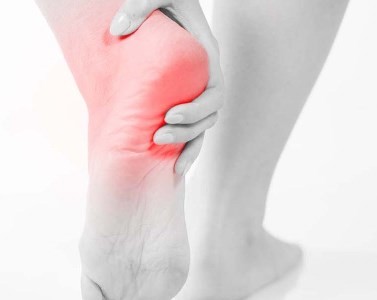What Is Plantar Fasciitis And How Heel Pains Occur?
The most disruptive type of pain is the one that makes it difficult for you to move around. If you feel stabbing pain in your feet it could be wise to get checked out. This could be from an irritated plantar fascia ligament. The strong band of tissue that supports the arch of your foot can become irritated and inflamed, resulting in plantar fasciitis. You can feel stabbing pain in your heels when you have plantar fasciitis. Taking your first steps in the morning or right after a long period of sitting could be very painful. It usually feels better when you're moving around but gets worse again after being on your feet for a while. The majority of people who experience this pain are runners, obese or obsessive individuals, and people who wear shoes with inadequate heel support.
Symptoms Of Plantar Fasciitis:
1. The primary sign of plantar fasciitis is pain at the bottom of the heel or, rarely, the bottom of the midfoot. It typically affects only one foot, although it might happen with both.
2. Plantar fasciitis pain gradually worsens over time. The discomfort may be acute or mild. Some people experience a burning sensation that radiates outward from the heel on the bottom of the foot.
3. Usually, the pain will be at its worst when you first get out of bed in the morning or after spending a lot of time sitting or lying down. Climbing stairs may be quite difficult due to heel stiffness.

Causes Of Plantar Fasciitis:
YWhen there is too much pressure on the plantar fascia, it gets tight and causes plantar fasciitis. You experience pain and stiffness as a result of the inflammation that the strain or damage generates.
Tiny tears develop in the tissue as the plantar fascia becomes more tense. Inflammation and irritation will increase when there is greater stress and tearing in the plantar fascia. The pain and stiffness related to plantar fasciitis are brought on by this tearing and accumulation of stress.
Factors Which Increases The Risks Of Having Plantar Fasciitis:
There are some things that can make you more likely to get plantar fasciitis. As follows:
- 1. Age:
- Exercises:
- Obesity or being overweight
- The mechanics of walking:
The likelihood of having plantar fasciitis increases as people age. It occurs most frequently in people between the ages of 40 and 60.
The plantar fascia can be stressed during some exercises. Running for long distances, ballet dancing, jumping exercises, and aerobic dance are examples of activities that put a lot of strain on the heel and the surrounding tissues and can hasten the onset of plantar fasciitis.
Gaining weight increased the strain and stress on the plantar fascia and the area around the heel. The plantar fascia is also caused by carrying too much weight.
Flat-footed individuals and those with abnormal gait patterns have a significant impact on how much weight is evenly distributed on the heel. Plantar fasciitis is brought on by abnormal weight distribution, which stresses the fascia.
Heel pain and plantar fasciitis treatment:
The most popular types of treatments used to treat plantar fasciitis include foot bracing, cortisone injections, and strapping. However, biologic regenerative therapies like PRP or platelet-rich plasma treatment are the greatest techniques to effectively handle it and offer long-lasting results and improvements. PRP is now frequently used to treat plantar fasciitis because it encourages the body's natural ability to mend the injured tissues and offers longer-lasting and quicker results. Plantar fasciitis PRP treatment is offered in Kochi by Dr. Vineeth MB, an orthopaedic consultant. Best PRP Therapy for Biological Heel Pain in Kerala, India










